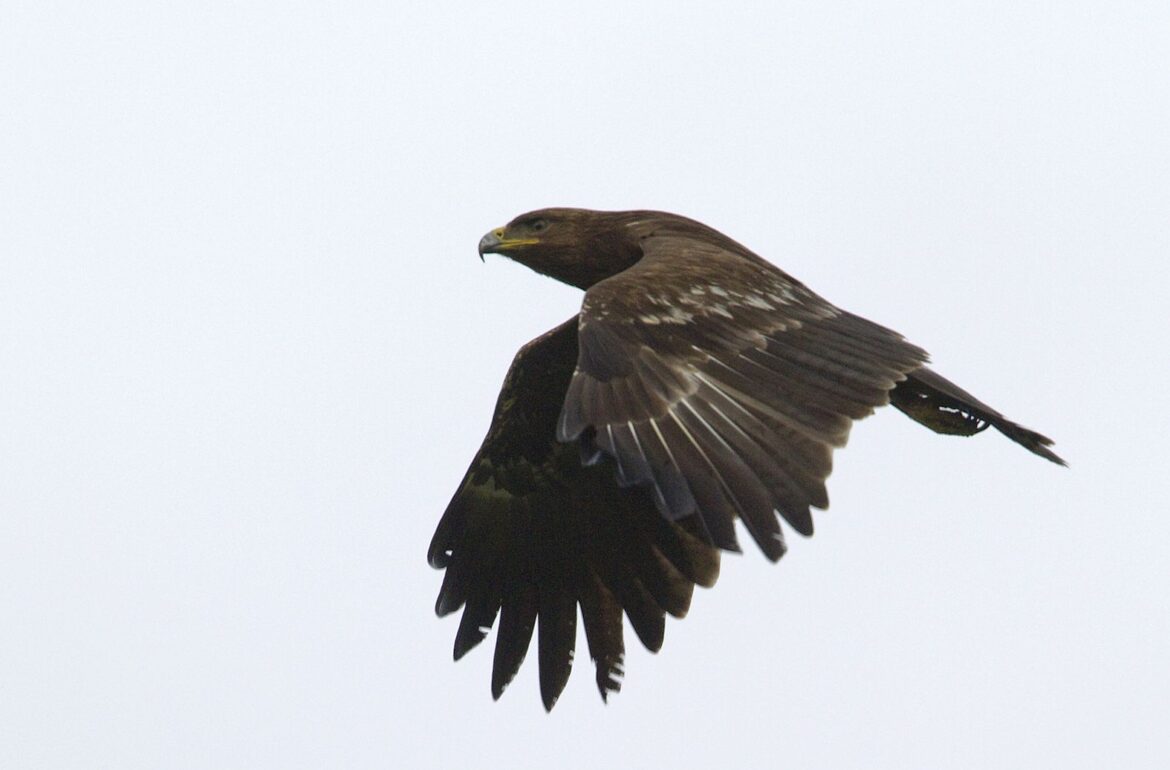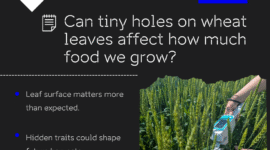In Estonia, there are only about 5-10 breeding territories of greater spotted eagles (Clanga clanga) and about half of them are occupied by hybridizing pairs of greater and lesser spotted eagles (Clanga pomarina). Around 500-600 pairs of lesser spotted eagles can be found in Estonia. In comparison, there are less than 4000 pairs of greater spotted eagles in the world. So, Clanga clanga is classified as vulnerable to extinction by the International Union for Conservation of Nature.
Scientists from Estonia, Lithuania and Poland have worked together on an international research project since 2005 to find more information about the habits of spotted eagles, to protect them and to obtain a better understanding of their whole nature. Recently, the article Genetic determination of migration strategies in large soaring birds: evidence from hybrid eagles[1], written by Ülo Väli, Paweł Mirski, Urmas Sellis, Mindaugas Dagys and Grzegorz Maciorowski was published in the magazine Proceedings of the Royal Society B.
Senior researcher of zoology at the Estonian University of Life Sciences, Ülo Väli, said that for the years 2005–2016, they recorded data from about 128 migratory movements of 62 birds, comprising 27 greater spotted eagles, 21 lesser spotted eagles and 14 hybrids. They used global positioning system (GPS)-telemetry to compare the autumn journeys and wintering ranges. Tracking data were supported by habitat suitability modeling, based on GPS fixes and ring recoveries. “We gathered data from three countries together and it gave us enough information to make some conclusions,” Väli noted.
Surprising result for ornithology
Väli explained that it is well-known that smaller, passerine birds, migratory movements are predominantly genetically determined. “It was thought that large soaring birds, such as spotted eagles learn this knowledge from the others, that social factors play the largest role, but our study shows that the genes also have a bigger role for them”, Väli said.
The annual migration of greater and lesser spotted eagles to their wintering grounds start at a different time. Hybrid eagles start to migrate earlier together with lesser spotted eagles. Väli explained that if sociality and learning would have a greater role, the hybrids would have flown further away with lesser spotted eagles, but instead of that, they stopped and wintered with greater spotted eagles that started later. “It reflects that genetic factors in soaring birds are more important than previously assumed, although we cannot rule out the contribution of social interactions”, Väli summed up.
Data gives many more opportunities
Väli noted that the new information is useful because it gives more knowledge about rare species and helps to protect them. “We have not yet fully understood why greater spotted eagles disappear from Estonia, because they have good conditions here, but one eagle that was observed by our Polish colleagues was shot down in Balkan, and another one we observed was shot down in Lebanon, so it can be due to one of these reasons”, he said and added that shooting the birds is a leisure activity in the Middle-East, and they do not use eagles in any special way.
Väli mentioned that it is difficult, but it may be possible to make the routes of the birds a bit safer by sharing the information about birds internationally. “Attempts are made to learn safer routes for geese and storks, but we can’t do this for eagles, as we found out the genetic factor is stronger”, Väli noted.
As the researchers now have 11 years of data and continue to observe birds, they will write more conclusions about different aspects of greater and lesser spotted eagles. “One topic can be about the habitat use by spotted eagles”, Väli pointed out, “then we can know which habitats they prefer and what influences this choice, for example, and create better conditions for them too”.
Written by Marii Kangur
This article was funded by the European Regional Development Fund through Estonian Research Council.
[1] http://rspb.royalsocietypublishing.org/content/285/1884/20180855
 Back
Back



